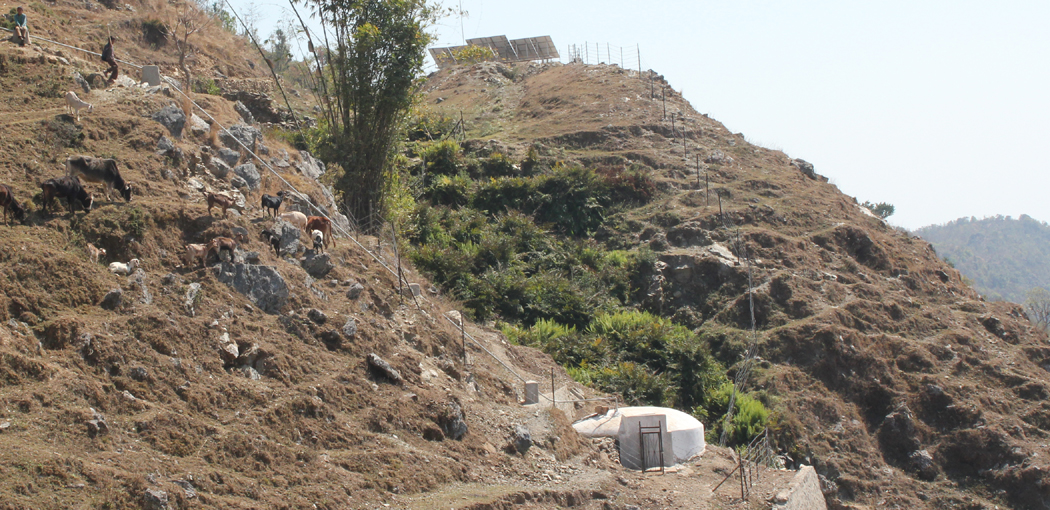
The vast majority of the rural drinking water schemes in Nepal are gravity flow water supply schemes. However, there are still many villages up on the hills without water supply on the spot; where no feasible ways to provide access to safe water with gravity systems exist due to remote elevated settlements in hill tops. In such situations, lifting drinking water supply system using solar power could be the solution to consider both for accessible and affordable to the rural communities. The use of solar power is environmental friendly and cost effective to the communities. As one step towards providing access of safe water in the hill tops of rural community with both accessible and affordable, one Consortium project has supported to implement the Kadalpani Drinking Water Supply System using Solar Power in the Dailekh district of Nepal. The use of solar power using photovoltaic solar panel (PV) is the low-cost, environmental friendly and sustainable sources of power supply for the water pump to lift water in the elevated area where village located.
This project is supplying clean water to the 573 people (275 women) of 91 household of remote village at the hill top of Dullu in Dailekh district Nepal. Previously, there is no form of systematic water supply system in the village; rather, the villagers have to walk for several hours to the surrounding sources to collect water. Because the water is obtained from unprotected springs, the water quality is poor and often contains impurities and E-coli. This created a high risk situation for the villagers and suffered from water borne illnesses. Now the villagers are getting clean and safe water drinking water and have no risk of water borne illnesses.
Further experiences with solar water supply systems:
The experiences with a mini solar system providing drinking water to a health centre, school and community in Benin is shown in this video. It was presented at Rural Water Supply Network forum 2016 in Abidjan, Côte d'Ivoire.

